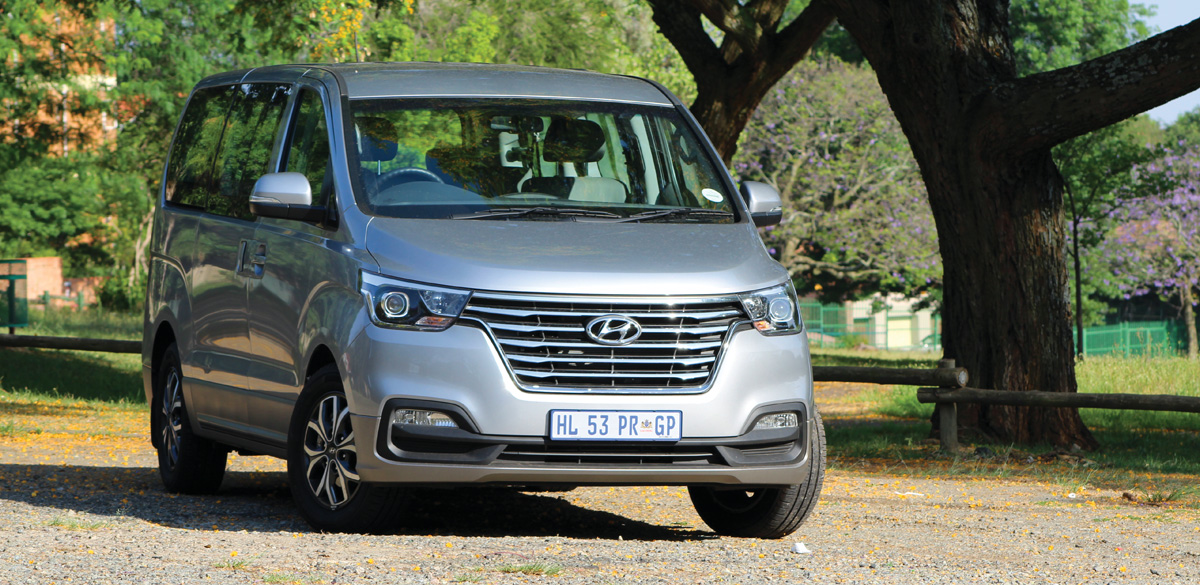Hyundai’s H1 gets handsome

It was only two years ago that Hyundai last gave the H1 a mild sprucing up. In fact, since its original launch in 2009, the H1 has received periodic updates in various forms. During 2018 it received its most dramatic to date – a bold new face.
Gone is the gawky façade more than 17 500 local buyers have since come to love, and in its place is a handsome, bold, truly modern face with a dominating chrome grille and sharply styled light clusters. These incorporate projector headlamps (now automatic) and harmoniously flow on from the grille. Our Elite-spec Bus model also boasted the new 17-inch alloy wheels and body-colour side mirrors.
Little else has been changed on the exterior of the H1 Bus, but the interior has received a few updates. Three of these are significant – the first and most obvious is the new touchscreen infotainment system. This easy-to-use system is available with optional navigation for a small outlay.
The other two enhancements include a steering wheel that can now adjust for reach as well as rake, allowing for a more finely tuned driving position and greatly enhanced driver comfort; as well as the reversing camera incorporated into the rear-view mirror. I did, however, find that I used this feature far less often than I do on vehicles where the camera view is displayed on the infotainment screen.
The rest of the H1 Bus’s interior is as comfortable and practical as it’s ever been. There is sufficient storage, the quality of materials is high and electronic climate control with separate rear control aids interior comfort.
One of the few nine-seater minibuses in this segment, the H1 Bus offers very good passenger comfort and space. All passenger seats recline, and the middle row of seats is adjustable, meaning more or less legroom can be apportioned where needed.
There are, however, a few enhancements I’d have liked to have seen, which I feel Hyundai might have missed. The first is that moving the second-row seats to access those in the third row is unnecessarily difficult. I also believe the lack of headrests and three-point seatbelts for the middle-seat passengers is a safety oversight (there are two-point lap belts).
Speaking of safety, the H1 Bus now features electronic stability program in addition to its anti-lock brakes and dual front and (new) side airbags. Rear parking sensors and cruise control are standard on the Elite-spec Bus.
The H1’s 2,5-litre turbodiesel powertrain remains unchanged – sending its 125 kW and 441 Nm to the rear wheels via a five-speed automatic gearbox. While the engine delivers a healthy amount of grunt (and is claimed to consume an average of 9,8 l/100 km; pretty good for a vehicle of this size), it is perhaps beginning to feel unrefined compared to units fitted to the newer competition vehicles.
The gearbox, too, feels like a true old-school “slushmatic” and could do with being more responsive – and a sixth gear to bring the revs down at highway speeds. However, that’s where my criticism of the H1’s drive ends as, for the most part, it’s an easy, comfortable drive.
There’s no denying that, despite its handsome new looks, the H1 2.5 Bus Elite is starting to show its age in some key areas and perhaps could’ve received more in the way of safety equipment with this latest update. That said, it offers super value for money and is just as likeable as it’s ever been…
Priced at R639 900, it also features an impressive five-year/150 000 km warranty, an additional two-year/50 000 km powertrain warranty, roadside assistance for five years/150 000 km, and a five-year/90 000 km service plan – one has to look at significantly more expensive rivals for a similar mix of features and practicality.
Published by
Focus on Transport
focusmagsa



